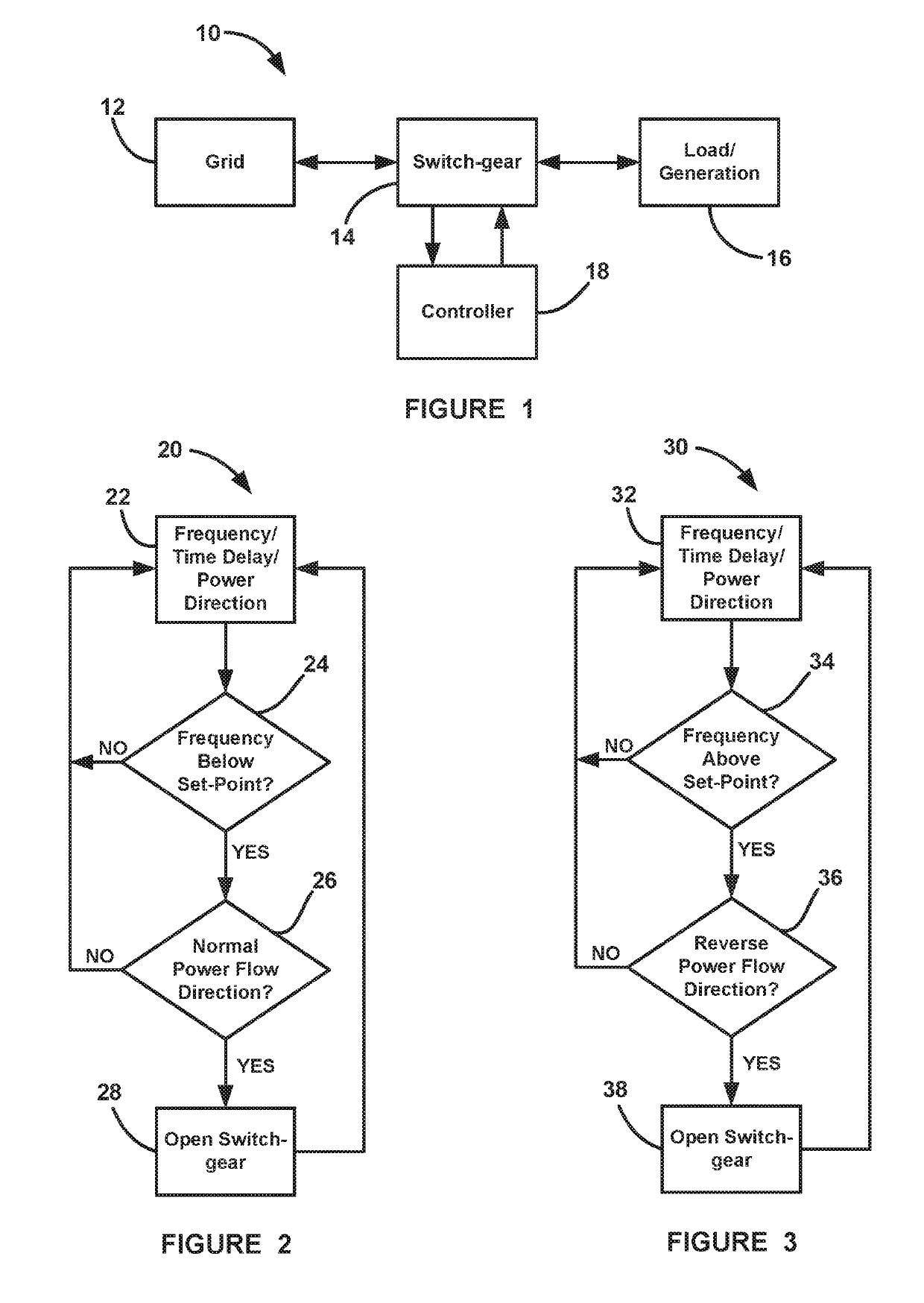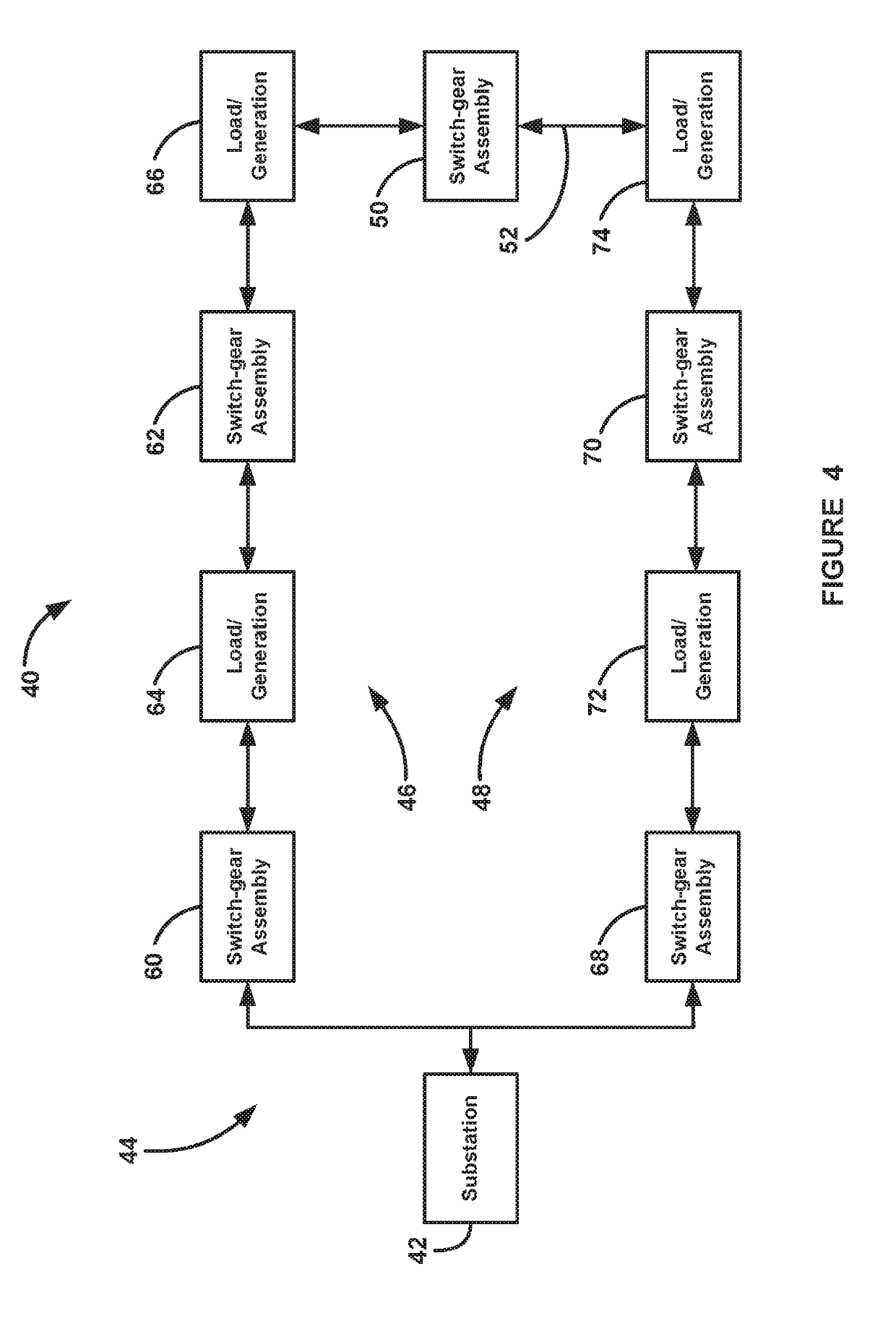Coordinated frequency load shedding protection method using distributed electrical protection devices
a technology of distributed electrical protection devices and frequency load shedding, which is applied in the integration of power network operation systems, instruments, effective value measurements, etc., can solve the problems of system reducing the ability to respond to changes in frequency of ac signals as needed, periodic negative load from time to time, and inability to respond quickly to electrical power distribution networks
- Summary
- Abstract
- Description
- Claims
- Application Information
AI Technical Summary
Benefits of technology
Problems solved by technology
Method used
Image
Examples
Embodiment Construction
[0015]The following discussion of exemplary embodiments directed to a system and method for providing frequency load shedding in an electrical power distribution network is merely exemplary in nature, and is in no way intended to limit the embodiments of the disclosure or applications or uses.
[0016]As will be discussed in detail below, a frequency load shedding scheme is disclosed for an electrical power distribution network that controls switch-gear at the outer edges of the network so that the number of loads that are removed from the network during a frequency event is limited. More specifically, switch-gear is distributed within a distribution network that supplies power to a group of loads. Each switch-gear detects a frequency event and which direction the power is flowing, i.e., is the group of loads providing power to the network. Thus, if the switch-gear determines that power is being provided to the network because the group of loads is generating more power than it is cons...
PUM
 Login to View More
Login to View More Abstract
Description
Claims
Application Information
 Login to View More
Login to View More - R&D
- Intellectual Property
- Life Sciences
- Materials
- Tech Scout
- Unparalleled Data Quality
- Higher Quality Content
- 60% Fewer Hallucinations
Browse by: Latest US Patents, China's latest patents, Technical Efficacy Thesaurus, Application Domain, Technology Topic, Popular Technical Reports.
© 2025 PatSnap. All rights reserved.Legal|Privacy policy|Modern Slavery Act Transparency Statement|Sitemap|About US| Contact US: help@patsnap.com


